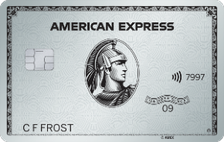Our picks of the best rewards credit cards & offers in October 2025
These are the rewards credit cards that caught our attention across different categories. For these picks, we are assuming the cardholder pays off their balance in full each statement period (i.e. we have not factored in the interest rate on purchases). If you don’t pay off your balance in full and on time each month, you should seriously consider whether a rewards card will be suitable.
Top rewards card for ongoing points earning
Bankwest More World Mastercard Earn 2.5 points per $1 spent on eligible purchases with no cap on points. That's a very generous earn rate. The card also offers 0% FX fees, complimentary overseas travel insurance and 10 lounge passes per year, making it one of the better cards in the market overall, too. One caveat is that it's not super clear what value you may be able to get from your More Rewards points before you sign up. The annual card fee is $270.
Rewards card with the biggest sign-up bonus
Citi Prestige Credit Card 250,000 bonus Citi reward Points when you spend $10,000 on eligible purchases within 3 months from approval. Eligible purchases exclude Cash Advances, Balance Transfers, Special Promotions, interest and fees. Any refunds and Chargebacks on purchases will also be excluded and will not form part of the spend criteria. The annual card fee is $700.
Top low fee rewards credit card
Amex Qantas Discovery Card This card offers an inexpensive way to earn Qantas points. There's no annual fee and 0.75 Qantas Points per $1 spent on everyday purchases. There's also no limit on the number of points you can earn. It’s not as perk-packed as some other American Express cards but the ongoing earn rate will keep your points balance ticking over nicely. You can add up to four extra cardholders for free.
Top card for cashback rewards
BCU Rewards Credit Card If you want direct cashback instead of points, we like the BCU Rewards Credit Card. You can earn cashback at a rate of 0.66% for each Australian dollar charged to your card for eligible transactions, up to a maximum of $500 cashback per year. You’d need to spend around $6,250 per month to get the max, but even if your monthly spend is half that, it’s still a decent offer. The annual card fee is $89.
How do rewards credit cards work?
Rewards credit cards allow cardholders to earn rewards points on eligible purchases made with the card. Points can then be redeemed through the card’s rewards program. Rewards can include cashback, gift cards, cosmetics and homewares, or even flights and accommodation.
Rewards credit card points are usually matched to a certain spending value. A common example is 1 rewards point for every $1 spent. But some premium rewards cards offer higher earn rates on certain spend types – 3 points per $1 is about as good as it gets.
Some business credit cards offer particularly high levels of rewards.
Money.com.au data shows the ability to earn rewards points is the top single reason Aussies chose their credit card. Our survey found that one in four people (25%) ranked points as the main selling point of their card.
Types of reward you can get
Depending on the reward program you join, you may be able to choose from thousands of individual rewards. Some of the most common examples of rewards include:
- Gift vouchers & credit card cashback
- Cosmetics
- Homeware, kitchenware & electronics
- Outdoor & sporting equipment
- Entertainment tickets for sports, events, or movies
- Flights and accommodation
- Rental car bookings
- Charitable donations
10 ways to maximise your rewards credit card points
1. Look for bonus points
Take advantage of rewards credit cards with bonus sign-up offers (assuming the credit card is overall a good match for your situation).
2. Check the earn rate
Consider cards with higher point earn rates (again assuming the card overall is good value). Watch out for caps on how many points you can earn overall and for particular types of spending.
3. Check eligibility for rewards
Make sure you understand which purchases are eligible to earn points and which aren’t, and indeed which purchases earn points at a higher or lower rate.
4. Match the card to your lifestyle
If you travel a lot, a frequent flyer credit card may mean you earn more points. There are also travel credit cards with extra perks related to overseas use.
5. Use your card for everyday spending
Try to use your card for your day-to-day spending. But limit this to purchases you would be making anyway and that you can comfortably afford to pay off.
6. Earn bonus points
Some rewards programs allow you to earn points by hitting non-financial targets, like walking a certain number of steps per day. It's usually a small number of points but it all adds up.
7. Add an extra cardholder
Most credit cards allow additional cardholders (e.g. Amex credit cards allow up to four at no extra cost). If more than one person is using the card, you'll likely earn more rewards points (again watch for overspending).
8. Pool points with others
Some rewards programs allow point transfers between family and friends. This can help make it more likely you’ll get the most from your points, e.g. by putting points towards a group trip.
9. 'Volunteer' to pick up the bill
For split expenses with friends, family or roommates, offer to pay (and earn points) and have the others send you the money.
10. Redeem your points wisely
Look for the rewards perks that will get you the most bang for your points. But above all else, make sure you actually use them.
Don't forget to think about fees and other costs. The average reward points-earning credit card comes with an annual fee of $245, according to our analysis. Non-rewards cards cost around four times less at $60 each year on average. Make sure a rewards card will be worth the potentially higher cost for you.
Best credit card rewards program comparison
Picking the right card is important, but so too is choosing a top rewards program. To help you decide, here’s a comparison of some of Australia’s top credit card rewards programs. We’ve ordered the table based on the lowest number of points needed to buy a $100 supermarket gift card.
Program | American Express Membership Rewards |
|---|---|
Number of rewards cards available | 4 |
Partner airlines programs | 10+ major airlines |
Points needed for a $100 supermarket gift card | 20,000 (digital gift card) |
Points expiry | Never |
Program | Flybuys Rewards |
Number of rewards cards available | 2 |
Partner airlines programs | 1 |
Points needed for a $100 supermarket gift card | 20,000 |
Points expiry | Never, as long as you collect or use points at least once every 12 months |
Program | NAB Rewards |
Number of rewards cards available | 3 |
Partner airlines programs | 4 |
Points needed for a $100 supermarket gift card | 20,410 |
Points expiry | 3 years |
Program | Citi Rewards |
Number of rewards cards available | 3 |
Partner airlines programs | 3 |
Points needed for a $100 supermarket gift card | 20,900 |
Points expiry | Never |
Program | CommBank Awards |
Number of rewards cards available | 3 |
Partner airlines programs | 10+ major airlines |
Points needed for a $100 supermarket gift card | 21,000 |
Points expiry | Never |
Program | Velocity Frequent Flyer |
Number of rewards cards available | 12 |
Partner airlines programs | 16 |
Points needed for a $100 supermarket gift card | 21,608 |
Points expiry | 24 months since last activity |
Program | Qantas Frequent Flyer |
Number of rewards cards available | 34 |
Partner airlines programs | 15 |
Points needed for a $100 supermarket gift card | 21,850 |
Points expiry | 18 months if no activity on account |
Program | ANZ Rewards |
Number of rewards cards available | 2 |
Partner airlines programs | 4 |
Points needed for a $100 supermarket gift card | 22,500 |
Points expiry | 36 months from 31 December of the year points were earned |
Program | Amplify Rewards (Bank of Melbourne), BankSA, St.George Bank) |
Number of rewards cards available | 2 |
Partner airlines programs | 2 |
Points needed for a $100 supermarket gift card | 28,200 (for $100 cashback) |
Points expiry | Never if account remains open |
Program | Westpac Altitude Rewards |
Number of rewards cards available | 2 |
Partner airlines programs | 4 |
Points needed for a $100 supermarket gift card | 28,200 (for $100 cashback) |
Points expiry | Never if account remains open |
Program | Bendigo Bank Rewards |
Number of rewards cards available | 2 |
Partner airlines programs | 1 |
Points needed for a $100 supermarket gift card | 37,050 |
Points expiry | 35 months (just under three years) after points were originally credited |
| Program | Number of rewards cards available | Partner airlines programs | Points needed for a $100 supermarket gift card | Points expiry |
|---|---|---|---|---|
American Express Membership Rewards | 4 | 10+ major airlines | 20,000 (digital gift card) | Never |
Flybuys Rewards | 2 | 1 | 20,000 | Never, as long as you collect or use points at least once every 12 months |
NAB Rewards | 3 | 4 | 20,410 | 3 years |
Citi Rewards | 3 | 3 | 20,900 | Never |
CommBank Awards | 3 | 10+ major airlines | 21,000 | Never |
Velocity Frequent Flyer | 12 | 16 | 21,608 | 24 months since last activity |
Qantas Frequent Flyer | 34 | 15 | 21,850 | 18 months if no activity on account |
ANZ Rewards | 2 | 4 | 22,500 | 36 months from 31 December of the year points were earned |
Amplify Rewards (Bank of Melbourne), BankSA, St.George Bank) | 2 | 2 | 28,200 (for $100 cashback) | Never if account remains open |
Westpac Altitude Rewards | 2 | 4 | 28,200 (for $100 cashback) | Never if account remains open |
Bendigo Bank Rewards | 2 | 1 | 37,050 | 35 months (just under three years) after points were originally credited |
Expert tip on choosing a rewards program

Brad Kelly, Credit Card Expert
"There are plenty of options but not all of them are good. For my money, the best rewards program is American Express Membership Rewards – e.g. you can transfer points to a wide range of airline programs. But for any rewards program, unless you are a BIG spender they are often not worth it as the fees outweigh the benefits. The average Aussie spends about $3,000/month on their card. This won’t get you a toaster."
Brad Kelly, Credit Card Expert
How to choose a rewards credit card
Rewards credit cards can offer a range of benefits, but choosing the wrong card could end up costing you more than you get back. The average monthly credit card spend in Australia is around $3,000 – will you be spending enough to get sufficient rewards back?
Rewards credit cards are often available in various tiers, based on the amount you are likely to spend on the card each year. Finding the rewards card that suits you will depend entirely on how you plan to use the card.
Below are some factors to consider when choosing a rewards credit card.
Match it to your income and spending habits
How much you earn each year will affect how much you are able to spend on your card, and the value of the rewards you may receive in relation to the card’s fees.
Different rewards cards have different minimum income requirements. You may need an annual income of up to $100,000 to qualify for some premium credit cards.
But be wary of spending more than you otherwise would just to earn reward points.
Watch out for fees
Annual fees are particularly important when you're choosing a rewards card. Because, they're usually pretty high – over $1,000 in some cases.
If your rewards card's perks won't stack up when valued against the annual fee, the card will be costing you money overall. In this case, a no annual fee credit card is a possible alternative.
You may also be able to find credit cards with no international fees that still offer rewards.
Consider your points eligibility
Some cards will offer more points for purchases made for specific items, while some bills or purchases may not be eligible for points at all on certain cards. Balance transfers typically do not earn points.
It's important that the card you choose is compatible with your existing spending. In other words, will the purchases you make already actually earn you points?
Don't forget point caps too. Some cards include a cap for earning points on purchases (e.g. 100,000 per year). Or the earn rate might taper off as you spend more (e.g. 1 point for every dollar spent up to $10,000 and 0.5 points for every dollar above that).
Find a low interest rate
The reality is rewards credit cards are not ideal if you carry a revolving balance on your card from month to month as interest rates are usually very high.
If you think you won’t always pay off your balance in full, consider a low rate credit card as some of these still offer basic rewards.
A card with a high number of interest-free days will give you more leeway to pay off the purchases without incurring interest at those high reward card rates.
It's also possible to access rewards through some special offer interest-free credit cards, with a 0% rate for a limited time.
Is a rewards credit card worth it?
If you use the card responsibly, rewards credit cards can be a handy way to access perks (e.g. some credit cards come with travel insurance included) and earn points on eligible purchases made with the card. This has become a fundamental part of how credit cards work.
At their best, rewards cards mean earning rewards for spending you would be doing anyway, with the cardholder getting more value in perks than they pay in card fees.
But for some people, the higher annual fee typically charged on rewards credit cards cancels out the value of the benefits. In other words, some people pay more than they get back in rewards. There can also be a temptation to spend more to boost the rewards.
The key is choosing a rewards credit card based on how you spend currently, and maximising your points earning without spending more than you otherwise would.
One way to determine whether a rewards card may be suitable for you is to:
- Calculate how much you spend each year
- Calculate how many points you will earn based on that
- Calculate the associated value of these points (one method is to convert the points into a gift card at a shop you use regularly)
- Compare the value of your points with the fees included with the card
Here's an example...

Sean Callery, Editor
Let’s say you’re considering a credit card that earns you 1 rewards point per $1 you spend. You spend around $3,000 per month on your card, meaning the potential to earn 36,000 rewards points per year on the card. That would equate to around $163 in gift cards based on our analysis of rewards programs in Australia. For the card to be worth it based on the rewards points alone, the card fee would need to be less than $163 per year. A lot of rewards credit cards cost more than that, meaning you would need other card perks to make up the difference.
Sean Callery, Editor
Who can qualify for a rewards credit card?
Before you apply for a rewards credit card, make sure you meet the qualifying criteria. This is usually:
- Be over 18 years of age
- An Australian citizen or permanent resident
- Have a good credit score
- Have an annual income above the lender's cut off
How to apply for a rewards credit card
You can apply for a rewards credit card online, over the phone, or at your bank. When applying, you will need to provide supporting documentation so the card issuer can accurately assess both your application and your ability to meet repayments. This will likely include:
Personal details (name, date of birth, address etc.)
Valid identification - such as a driver licence or passport
Details of your assets – such as your home and a car if you own one
Details of your current expenses and other loans you may have
Employment details - including your employment status, salary information, and payslips to verify your income. If you're self-employed, you will need to provide alternative documents, such as previous tax assessments, instead of payslips.































